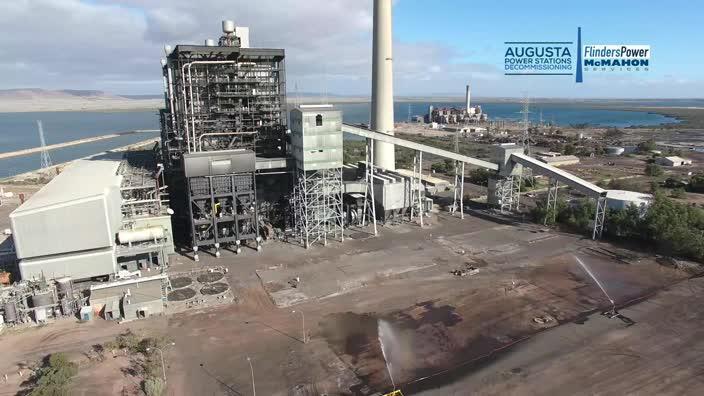Daniel Wills: Power top issue in South Australia election as green dream collides with dubious promise of lower bills
TAKING power in SA could hinge on being able to deliver it, cheaply and reliably, to struggling households. All three parties have their plans on the table, and the differences are stark, writes Daniel Wills.

Opinion
Don't miss out on the headlines from Opinion. Followed categories will be added to My News.
TAKING power in SA could hinge on being able to deliver it, cheaply and reliably, to struggling households.
After a long wait all three big parties now have their plans on the table and, in a policy area of near infinite complexity, have their simple messages.
Premier Jay Weatherill this week made a stunning election gambit and tripled down on his controversial embrace of renewables. Having already hit a target of delivering 50 per cent of the state’s energy from green sources, Mr Weatherill has now promised to push the amount to 75 per cent by 2025.
In pure policy terms, its not quite as dramatic a shift as it first sounds. With huge amounts of wind power already plugged into the grid, and more solar thermal on the way, expert analysis has SA cruising to near that much renewables without trying too much harder.
Most critically, the Government appears to have belatedly learnt the most critical lessons of a radical energy experiment that began a decade ago.
While “renewables” come under sustained attack from conservative commentators for pushing up power prices and creating grid instability, that narrow criticism misses the key point.
The big failings of wind and solar have not been the fact that they use renewable fuel, but that their output can’t be relied on. This has meant that blackouts are more likely when it’s not windy, a key factor in load shedding 12 months ago, and that older power stations like Port Augusta’s coal plant were pushed out of business and the remaining companies charge much more.
Many of these problems can be removed with the addition of new technologies like batteries and storage, now required by regulation. These were not in place when wind farms started spouting like weeds in SA after major State Government planning reforms to encourage them in 2009.
But even if the 75 per cent target is achievable, and with less harm than has been created in the recent past, Mr Weatherill has deliberately picked a divisive political fight. Since the start of the carbon wars in Canberra, which started with the election of former prime minister Kevin Rudd and has left a pile of political casualties, voters have been trained to believe that more renewables equals higher prices.
It has been justified by the experience in SA. Even if the final destination is a hi-tech world of abundant cheap and green power, the voyage has been in the dark and with pain in the hip-pocket. When these two ideas have collided at the ballot box, most fiercely in the 2013 federal election, promises of households saving money have annihilated political visions of more renewable energy to save the world.
Mr Weatherill will lock in the base with his new renewable energy target plan, at an election when a third force in the centre makes holding the faithful more important than ever.
But he also conceded this week, while telling a longer and complex story of the power problems bedevilling SA and the county, that “of course” the closure at Port Augusta meant everyone now paid more.
The Liberals’ strategy has been well-established for some time. With the combined Labor and Green vote languishing around 30 per cent, they are making a fullbore price pitch to the people who aren’t renewable zealots.
Their promise of a $300 cut to bills has been comprehensively picked apart. Much of that saving comes no matter what, and very little of it is due directly to party policy. Most of what the Liberals can claim for themselves relies on the construction of an expensive interconnector, which will take a long time to build and may not clear regulatory hurdles.
Doorknocking Liberal candidates clutching paid-for modelling from a reputable firm are promising hundreds of dollars off people’s bills. The Liberals also have plans for home solar battery subsidies targeted at so-called “algae voters” (who are tossing up between voting Liberal blue or Green) and encourage them to come home.
History suggests this strategy is a winner, but in a world that’s fast changing and an eternally-optimistic state with a chip on its shoulder that’s being offered a renewable vision as the latest silver bullet to put it on the world map, predictions are fraught with danger.
SA Best Leader Nick Xenophon put his cards on the table this week, with a decidedly thin energy policy. It is basically a new not-for-profit retailer which would be used to incentivise construction of a reliable renewable power station and deliver cheaper power to low income people who sign up.
As far as it goes, the plan is pretty inoffensive. But it’s silent on major issues that the major parties are addressing, like home storage and more connection to other states.
It is open to shredding by the major parties who have the resources, but also the ambition, to lead the state in multiple new directions with comprehensive plans rather than just helpful ideas.
During this campaign, it is staggering how often power comes back as the single most crucial issue in play when The Advertiser visits crucial seats to talk to voters about issues.
There is daylight, and occasionally a gentle breeze, between energy prices as top issue and whatever ranks second.


